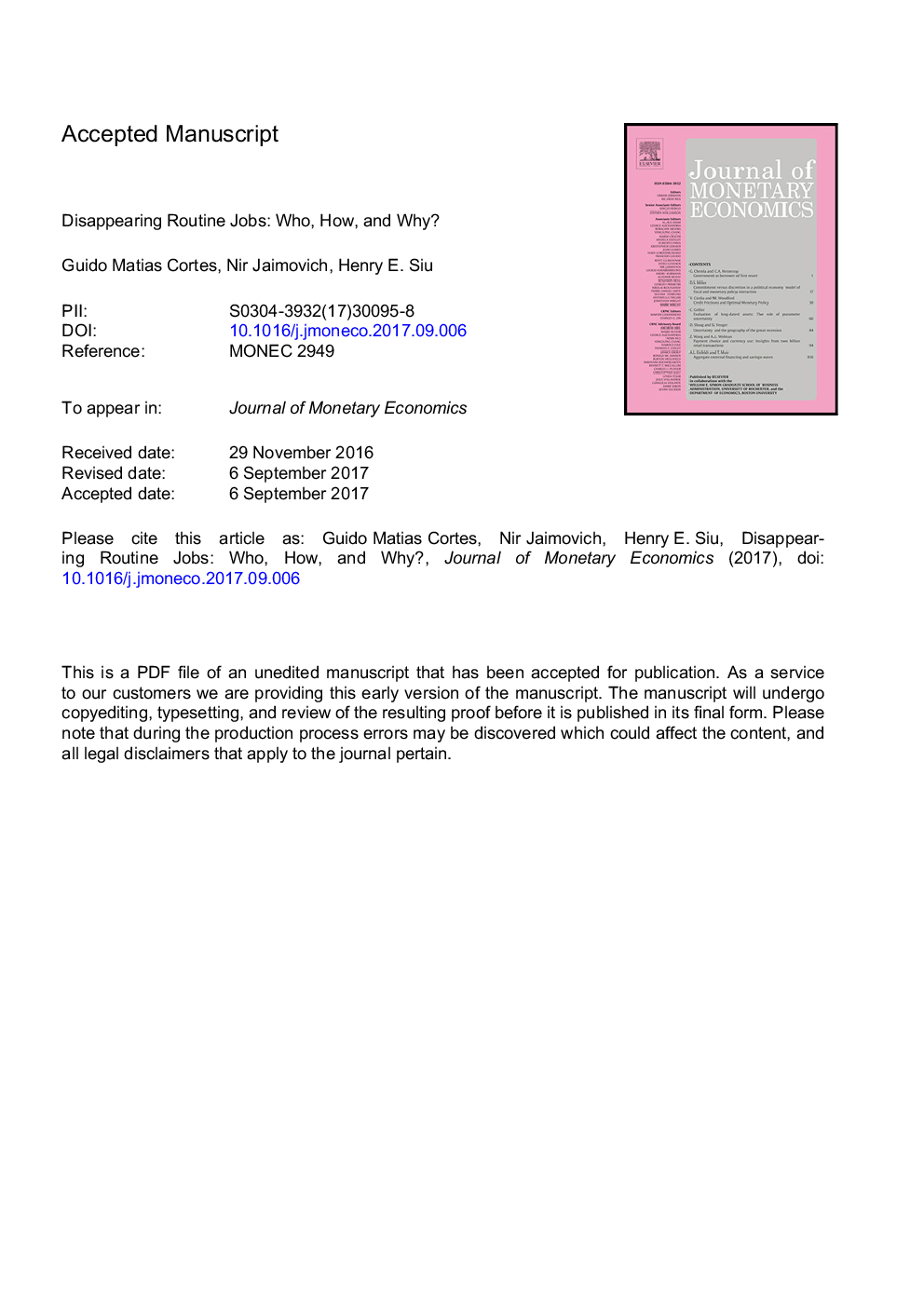| Article ID | Journal | Published Year | Pages | File Type |
|---|---|---|---|---|
| 7368386 | Journal of Monetary Economics | 2017 | 69 Pages |
Abstract
We study the deterioration of employment in middle-wage, routine occupations in the United States in the last 35 years. The decline is primarily driven by changes in the propensity to work in routine jobs for individuals from a small set of demographic groups. These same groups account for a substantial fraction of both the increase in non-employment and employment in low-wage, non-routine manual occupations observed during the same period. We analyze a general neoclassical model of the labor market featuring endogenous participation and occupation choice. In response to an increase in automation technology, the framework embodies a tradeoff between reallocating employment across occupations and reallocation of workers towards non-employment. Quantitatively, we find that this standard model accounts for a relatively small portion of the joint decline in routine employment and associated rise in non-routine manual employment and non-employment.
Related Topics
Social Sciences and Humanities
Economics, Econometrics and Finance
Economics and Econometrics
Authors
Guido Matias Cortes, Nir Jaimovich, Henry E. Siu,
